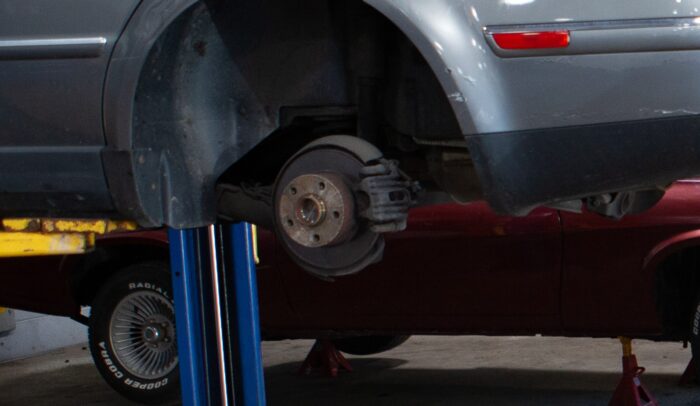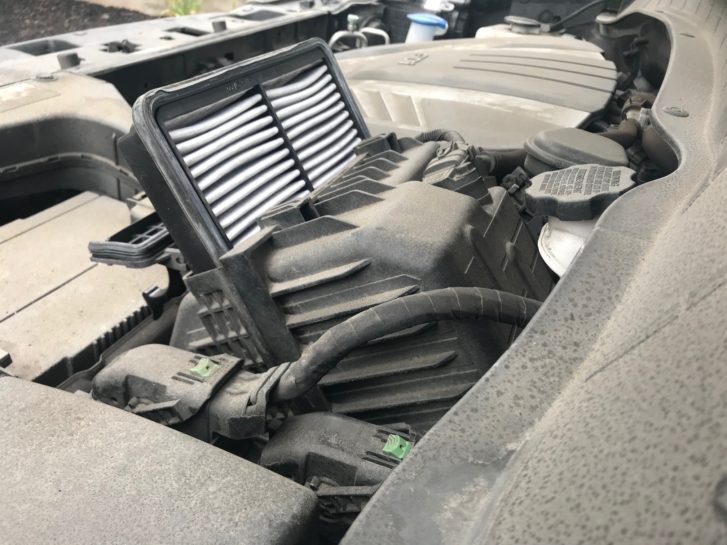By Mark Kozemko, Johnson College’s Automotive Technology Program Director
Original published in the December 25, 2020 edition of the Valley Advantage.
So far we’ve been lucky in terms of snow fall and accumulation this year, but as we know, that can change in a heartbeat here in NEPA. The topics of snow and cold caused some to reach out about questions regarding their vehicle’s anti-lock brake and Traction Control systems.
What are anti-lock brakes?
The anti-lock brakes system — or ABS, as it’s referred to in the automotive industry — is a system that keeps your brakes on each wheel from locking up and causing a skidding condition. When wheels lock up and skid on the road surface, you have no control and cannot steer the vehicle away from possible obstacles.
How do anti-lock brakes work?
In our previous columns we mentioned how smart our vehicles are becoming. ABS makes them even smarter. Sensors in each wheel send a signal to an ABS control unit. These sensors tell the controller when a wheel is locking. The control unit then sends a signal to a solenoid that controls the hydraulic pressure to that wheel. The pressure is decreased and the wheel is allowed to keep spinning. This keeps traction on the road surface so you can safely steer the vehicle.
If your vehicle is equipped with ABS and you are driving in the snow, you don’t need to pump the brakes, but you will feel the brake pedal vibrate and you may hear some unfamiliar noises. Don’t let these vibrations or noises make you take your foot off the brake pedal. The vibrations and noises are letting you know the system is operating properly and doing its best to keep you in control of your vehicle. Taking your foot off the pedal will just deactivate the ABS system and decrease your ability to safely steer your vehicle.
What is traction control?
If your vehicle is equipped with ABS, chances are it’s also equipped with traction control. Traction control works just the opposite of ABS — it stops wheels from spinning and slipping. For instance, traction control senses that a wheel is spinning and the control unit increases hydraulic pressure to that specific wheel to stop it from spinning.
How does traction control work?
I’m sure you’ve seen videos of vehicles stuck in the snow and wheels spinning out of control and the vehicle not going anywhere. With traction control, the spinning wheel has a sensor that tells a control unit, “I’m spinning and can’t seem to stop!” The control unit sends a signal to that same solenoid I mentioned above, but this time, instead of reducing the hydraulic pressure, it increases the pressure to slow down the wheel. When this happens, the other wheels gain more traction and in most cases, will pull the vehicle out of a stuck situation.
Traction control also helps vehicles take corners better and make it around bends in the roadway without crossing the center line or having the rear of the vehicle trying to slide around the bend before the rest of the vehicle. In other words, it helps correct under-steer and over-steer.
What is correct under-steer and over-steer?
Let’s say, you’re traveling a bit too fast around a bend, and you go to turn the steering wheel but the vehicle continues to go straight. This is called under-steer. What’s happening is the front end does not follow your intended course. Sensors in the vehicle identify this problem and attempt to make corrections by braking certain wheels that will change the direction and help the vehicle make the bend. This specific under-steer situation usually occurs on front wheel drive vehicles.
If the rear of the vehicle slides across the center line, it’s called over-steer. Again, sensors in the vehicle will sense this situation and attempt to correct by braking the wheels necessary to get the vehicle around the bend safely.
Remember, ABS and traction control work together to help keep your vehicle and occupants safe. These options are standard equipment on just about all new and late model vehicles. Make sure you let them do their job and don’t let noises and vibrations make you let up on the brakes, especially now that the cold is here and snow is soon to follow.


